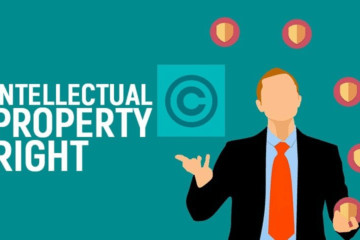
This article is written by Vedanshi Dagar, an intern under Legal Vidhiya
Abstract:
In this research, the distinction between patentable and non-patentable innovations is discussed, along with the standards for awarding patents. Patents provide legal protection for innovators by allowing them exclusive ownership of their innovations for a predetermined period of time. But not every innovation qualifies for patent protection, as specific requirements must be met.
The argument for excluding ideas that cannot be protected by a patent is further examined in the article, along with the possible conflicts with the public interest, the possibility for innovation stifling, and the necessity to strike a balance between the demand for exclusive rights and the advancement of knowledge. These exclusions have been imposed by many legal systems to preserve the difficult balance between honoring inventors and advancing the common good.
Keywords:
Patentable, non-patentable, legal protection, ownership, innovations, public interest, legal system, demand, rights.
1. Introduction
Patents are essential for encouraging innovation, protecting intellectual property rights, and promoting economic expansion. They grant creators and inventors exclusive rights to their creations, forbidding unauthorized production, use, or sale of their patented technology. The issuance of patents encourages innovators to make their ideas known to the public, advancing knowledge and advancing technology.
Although the idea of patents traces back to ancient cultures, the contemporary patent system was primarily established during the Industrial Revolution. The Statute of Monopolies was enacted in England in 1623 after the first patent law was passed in Venice, Italy, in 1474. Since that time, patent systems have developed internationally, and each nation now has its own set of rules and laws that regulate the issuance and enforcement of patents.
The significance of patents is multifaceted. From the viewpoint of the inventor, patents provide a legal framework for protecting their efforts in R&D, giving them a competitive edge and the chance to make money through licensing or commercialization. Due to the fact that inventors disclose their ideas in return for exclusive rights, patents also promote teamwork and information sharing. In addition, patents promote innovation and technical development, which boost economic growth. They encourage investment in R&D, draw foreign direct investment, and build an entrepreneurial culture. From medicines and biotechnology to electronics and telecommunications, patents serve as catalysts for technical advancement in an array of industries.
Importance of defining patentability criteria
In the realm of intellectual property, defining clear and comprehensive patentability criteria holds immense significance. The defined rules and conditions known as “patentability criteria” must be met by inventions in order to qualify for patent protection. These standards serve as crucial guides for inventors, patent offices, and the legal system to establish the limits of patentable subject matter. A fair and efficient patent system is dependent on how these criteria are defined and used. By establishing specified standards, it helps in preventing frivolous or excessive patenting, keeping a balance between compensating inventors and supporting competition and the development of diverse businesses. Overall, determining the criteria for patentability is essential to creating a just and efficient patent system that encourages innovation and economic development.
Purpose of identifying non-patentable inventions
Imagine a world of inventiveness where ideas flow freely like a sparkling river. Non-patentable inventions are like colorful pebbles that shimmer in the sunlight, catching our attention but unable to be captured and protected by the patent system. They are the wildflowers that bloom and beautify our landscape, yet they cannot be claimed by a single gardener.
Non-patentable inventions are the seeds of imagination that add diversity and richness to our collective pool of ideas. They may not have the same legal protection as patents, but they nonetheless add to the structure of human creativity by encouraging new thoughts and future research.
First and foremost, identifying non-patentable inventions creatively allows inventors to navigate the labyrinth of intellectual property law with finesse. Inventors are given the creative freedom to embrace already-existing intellectual property assets and expand upon them by creatively finding non-patentable ideas. In addition to their non-patentable ideas, they can use copyrights, trade secrets, or other types of protection to erect a strong and complete barrier around their creative successes.
Overall, recognizing non-patentable inventions helps inventors make informed judgments about their inventions, manage their resources efficiently, seek alternative protection measures, encourage cooperation, and reduce the risk of infringement. It enables innovators to maximize the value of their discoveries while navigating the complex realm of property.
2. Legal Criteria for Patentability
The Indian Patents Act, of 1970, and its subsequent amendments regulate the conditions for patentability in India. The Act specifies the requirements that an invention must fulfill in order to be eligible for patent protection. These criteria include novelty requirement, inventive step (non-obviousness), industrial applicability (utility), enablement and sufficiency of disclosure, and statutory subject matter.
Novelty requirement
In the realm of intellectual property, India’s legal criteria for patentability stand as pillars of innovation and progress. The journey towards securing a patent begins with the novelty requirement, where the inventive concept must soar above the existing sea of knowledge. This stipulation necessitates that the innovation remain unique, untarnished by prior art, and emerge as an example of inventiveness.
Inventive step (non-obviousness)
Venturing further, the inventive step entices additional research. It forces creators to explore undiscovered non-obviousness, creating solutions that confound even the most knowledgeable brains in the relevant subject. Instead of being merely a combination of well-known parts, the creation must have a glittering brilliance that inspires amazement, similar to a masterfully put-together puzzle.
Industrial applicability (utility)
As the inventive marvel gains traction, it must embrace industrial applicability with open arms. The invention must have actual application, proving its value in several industries, rather than just existing in theoretical domains. It ought to be a motivating factor, providing real advantages and exhibiting the potential to revolutionize the landscape it inhabits.
Enablement and sufficiency of disclosure
Enablement and sufficiency of disclosure emerge as key partners in this complex dance of patentability. The creator takes on the role of a storyteller, creating a web of detail and precision that reveals the inner workings of their invention. The creator gives others in the field the tools they need to understand the core of the innovation and start the process of investigation, experimentation, and expansion through thorough disclosure.
Statutory subject matter
Innovation must, although thriving, find its place within the constraints of statutory subject matter. The invention must adhere to the law and not infringe on any areas that are off-limits. A few topics are outside the purview of patentability, including business processes, mathematical algorithms, and agricultural methods. The legal standards protect the public interest within these bounds, preserving a delicate balance between exclusivity and knowledge accessibility.
The legislative requirements for patentability in India create a thorough framework that fosters innovation while maintaining equilibrium. Inspiring innovators to follow the route of originality, creativity, industrial application, enablement, and conformity with statutory subject matter, they act as a compass for inventors. Innovators can begin a transformational journey by following these guidelines, leaving a permanent imprint on the landscape of intellectual property and catapulting civilization into a future influenced by their creative energy.
3. Patentable Inventions
In today’s fast-paced and innovative world, the concept of patentable inventions holds immense importance. Patents are granted to protect and encourage inventors, providing them with exclusive rights over their creations for a limited period of time. However, the question arises: what exactly qualifies as a patentable invention?
Firstly, it is crucial to understand that patentable inventions must be novel and non-obvious. This means that they should possess unique characteristics or offer inventive solutions to existing problems. These inventions can range from technological advancements like software algorithms or medical devices to more abstract ideas such as business methods or chemical formulas.
Utility requirement
A fundamental element of patent law for an invention to qualify for patent protection is its utility requirement. It refers to the invention’s utility or practical usefulness. To put it another way, an innovation needs to have a clear and convincing utility or purpose that shows how it may be used or operated realistically.
The utility criterion requires inventors to outline the advantages or practical benefits that their innovation delivers. This guarantees that patents are only given for functional inventions with practical applications, rather than only for theoretical conceptions or abstract ideas. The utility criterion serves as a safeguard, making sure that only innovations with practical worth and the potential to advance technology are eligible for patents.
In today’s fast-paced world, innovation is the key to success. Patents play a crucial role in protecting and encouraging inventors to come up with groundbreaking ideas. India, being one of the leading countries in technology and research, has a strict utility requirement for patents. This means that an invention must have a practical application and provide some useful function to be eligible for patent protection.
There are several instances of patentable innovations in India that satisfy the utility criteria. The creation of solar-powered water purifiers is one such instance. India is experiencing serious water shortage problems, so this idea offers a workable solution by using solar energy to clean water and make it safe for use.
Making biodegradable packaging from agricultural waste is another instance. Finding sustainable alternatives to plastic packaging becomes increasingly important as environmental concerns increase. These cutting-edge materials serve a valuable purpose by maintaining the quality and freshness of the items in addition to reducing waste.
These examples highlight how patentable inventions meeting the utility requirement can address pressing issues while improving people’s lives. By granting patents for such innovations, India encourages inventors to continue their research and development efforts, fostering technological growth and economic progress.
Continuing the discussion on patentable inventions, I would like to shed some light on the famous case of Bajaj Auto Ltd. v. TVS Motor Company Ltd., October 2010. This lawsuit involves a dispute over the patentability of specific motorcycle technical characteristics between Bajaj Auto and TVS Motor Company, two well-known Indian automakers.
The patentability of a motorcycle technology known as a “twin spark plug engine” was at the core of this lawsuit. This technique was patented by Bajaj Auto, who claimed that TVS Motor Company had violated their patent by incorporating it into their bikes.
Bajaj Auto’s patent, according to TVS Motor Company, was invalid since it lacked innovation and creativity. They argued that the dual spark plug engine technology was well-known and in use in prior art, making it ineligible for patent protection. Before being heard by the Supreme Court of India, the matter passed through a number of courts, including the High Court and the Intellectual Property Appellate Board (IPAB). The Supreme Court looked at the twin spark plug engine’s technical details and earlier art.
Bajaj Auto’s patent for the dual spark plug engine technology was declared invalid by the Supreme Court of India in 2009, finding in favor of TVS Motor Company. The court decided that the technology was a clear adaptation of prior art and lacked creative innovation. It highlighted the requirement that innovations meet the standards of originality, inventive step, and industrial application in order to qualify for patent protection.
The Bajaj-TVS case had a profound impact on how Indian patentability criteria were interpreted. It made clear how crucial the requirements for originality and inventive step are for considering patentability. The situation brought to light the requirement that innovations make meaningful innovative contributions in addition to incremental improvements in order to qualify for patent protection.
This judgment also established a precedent for considering the inventive step in patent disputes in India and reaffirmed the role of previous art in determining patentability. It is still used as a reference point in later judgments and acts as a guiding concept in Indian patent law for vehicle and mechanical inventions.
4. Non-patentable Inventions
Non-patentable inventions cover the spectrum of ingenuity that exists beyond the purview of patent protection. They represent remarkable ideas that are by nature engaging and inspirational but are unable to get exclusive legal protection under the patent system. These intrepid creations, often driven by boundless imagination and a flair for originality, push the limits of conventional categorization.
Non-patentable ideas sometimes arise in fields where exclusivity and legal rights are ineligible owing to their ephemeral or generally available nature. Although these ideas are not covered by patents, they nonetheless have a big impact on how technology develops, encourages creativity, and adds to our body of knowledge. They serve as examples for aspiring innovators, promoting unusual thinking and expanding the definition of what qualifies for patent protection. In the end, even if ideas that are not patentable might not profit from exclusive rights, their influence on innovation and human growth is still extremely beneficial.
Natural laws and things are typically regarded as non-patentable innovations. These are basic laws or patterns that may be seen in the natural world that control how things operate. Principles of physics, chemistry, biology, or mathematics, such as gravity, the rules of thermodynamics, or the laws of genetics, are examples of laws of nature. Natural phenomena, on the other hand, are visible occurrences or processes that take place in nature, such as weather patterns, geological formations, or biological activities. Natural laws and occurrences are often not protected by patents since they are seen to be a part of the body of knowledge and understanding held by the scientific community. Instead of asserting ownership over essential elements of the natural world, patent law seeks to encourage and reward human ingenuity and creativity. Patenting natural laws or occurrences might possibly restrict scientific progression and obstruct subsequent discoveries and developments.
It’s important to remember that while natural laws and occurrences themselves cannot be protected by a patent, inventions or applications that make use of or use these concepts in a new and inventive way may qualify for patent protection. In some situations, the natural principle itself may not be patentable; rather, the specific application or use of the concept may be.
Elaborating on this, one of the notable cases related to non-patentable inventions in India is the case of the Patent Application of AgrEvo, concerning a method for controlling pests using neem-based compositions. The case, commonly referred to as the “Neem Patent Case,” garnered significant attention and highlighted the issue of the patentability of traditional knowledge and biological resources.
AgrEvo (now Bayer) submitted a patent application in India in 1994 for a technique including the use of neem extracts to manage pests. Since neem, a plant species native to India has long been utilized for a variety of purposes, including pest control, the application caused intense controversy.
The case raised concerns about the potential misappropriation of traditional knowledge and the patenting of traditional practices. Neem was used for pest management in India for a long time, according to critics; therefore, it was not patentable according to the rules of Section 3(p) of the Indian Patents Act, 1970, which prohibits the patenting of agricultural or horticultural processes.
As a result of the case’s widespread media coverage, a number of groups and activists banded together to oppose the patent application. After opposition processes, the patent was ultimately canceled in 2005 by the European Patent Office (EPO), taking into account the prior art and the general understanding of neem’s pesticidal qualities.
The Neem Patent Case was a significant turning point in the debate in India over traditional knowledge, biodiversity, and patentability. It emphasized the need of preserving traditional practices and forbidding the issuance of patents for inventions originating from conventional knowledge systems.
The Traditional Knowledge Digital Library (TKDL) was founded in India as a result of subsequent legal and legislative changes made possible by this landmark case. The TKDL serves as a repository for traditional knowledge and offers prior art evidence to prohibit the granting of patents for discoveries drawn from traditional knowledge without proper acknowledgment and benefit-sharing.
The Neem Patent Case is still significant as it serves as a reminder of the necessity for strong safeguards to preserve traditional knowledge and stop the illegitimate appropriation of biological resources while fostering a balanced approach to intellectual property rights and innovation.
5. Conclusion
This research study has examined the relevance of patent eligibility requirements, the definition of patentable innovations, and the distinction between patentable and non-patentable inventions. The study has also illuminated the multifarious value of these standards in promoting innovation, guaranteeing legal clarity, protecting the public interest, and delivering significant case law.
A strong patent system is built on the foundation of the requirements for patents and patentable innovations, including novelty, inventive step, industrial application, enablement and adequacy of disclosure, and statutory subject matter. They encourage creators to advance the frontiers of knowledge, promoting the reveal of fresh and original answers to technological issues. These requirements must be met in order for inventors to receive exclusive rights, which promotes more research and development and boosts the economy.
Additionally, In order to preserve the delicate balance between exclusive rights and greater access to information, the standards for non-patentable innovations are essential. The exclusion of certain topics, such as laws of nature and abstract notions, guards against the monopolization of essential ideas and guarantees that innovation continues to advance the common good. Case laws that have had a significant impact, as those in the Bajaj Auto and Neem Patent cases, have clarified the difficulties with patentability and the necessity to protect biological resources and traditional knowledge.
In conclusion, the definition of non-patentable innovations and the standards for patents and patentable inventions all have a significant impact on the intellectual property environment. By putting them into practice, society gains from the sharing of information, innovators are encouraged to create, and there is a fine line between exclusive rights and public interest. We obtain important insights into the actual implementation and ramifications of these criteria by looking at notable case laws, which further emphasize their significance in driving innovation, safeguarding traditional knowledge, and developing international cooperation in the field of intellectual property.
Reference:
- https://www.uspto.gov/patents/basics
- https://ipindia.gov.in/writereaddata/Portal/Images/pdf/Final_FREQUENTLY_ASKED_QUESTIONS_-PATENT.pdf
- https://www.legalserviceindia.com/article/l300-Patentability-Criteria.html
- https://www.theipmatters.com/post/bajaj-auto-ltd-vs-t-v-s-motor-company-ltd
- https://indiankanoon.org/doc/248352/
- https://www.mondaq.com/india/patent/1286020/the-neem-patent-case#:~:text=Brief%20Background%20of%20the%20case&text=The%20said%20patent%20was%20deemed,the%20grant%20of%20the%20patent.
- https://neemfoundation.org/about-neem/patent-on-neem/




0 Comments